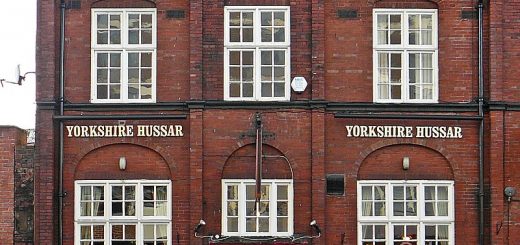St Peter’s, Rushton
Elliott O’Donnell in his ‘Haunted Churches’ (1939) refers to the following story associated with St Peters Church, Rushton. ‘A church, no longer in existence*, that, according to tradition, was once haunted by at least two ghosts, was St. Peter’s, Rushton, and associated with it is the following tragic story: In 1619 the Rushton estate, hitherto the property of the ill-fated Tresham family**, passed into the hands of Sir William Cokayne***, Lord Mayor of London, whose son, Charles, was created Viscount Gullen. Viscount Gullen’s heir, Bryan****, was of a very different disposition to his father, being gay, pleasure-loving and wildly extravagant. In order to complete his education and enable him to see something of the world before settling down, his father arranged for him to tour the Continent, exhorting him to study the peoples and customs of the different countries and to become as efficient in the various languages as possible. It was while he was in Italy, then the great centre of culture and intellect, that Brian met a beautiful Italian princess whom he seduced, leading her to believe that he fully intended to marry her. His infatuation for her ended; and ended, too, the generous remittances sent him by his father, he returned to England without even bidding the lady he had deceived good-bye.
Back at Rushton he became betrothed to Elizabeth*****, only child of Francis Trentham, Esq., son and heir of Sir Thomas Trentham of Rochester Priory, Staffordshire. He had known her when a boy, and there had been a sort of understanding between his parents and hers that, one day, he should marry her. During the marriage service, people at St. Peter’s noticed a veiled lady, in a white dress that looked remarkably like a bridal gown, enter the church and seat herself near the door, but they thought nothing of it, supposing she was some friend of the bride or bridegroom. Later on, when the bridal party were seated at the banquet table in Brian’s home, the attention of all was suddenly arrested by the entry of a veiled feminine form in white, the same figure that had been seen in the church. There was something strange about the visitant, something that checked the merry talk and laughter and cast a spell of silence over the whole assemblage. The bride shuddered, the bridegroom turned deadly pale. Up the vaulted hall the veiled figure stole, right to the banquet table. Confronting Brian, she raised her veil and revealed to his terrified gaze the white, lovely features of the Italian princess he had deserted.
Raising a golden chalice from the table, as if to drink the health of the newly-wed pair, she pronounced, instead, a curse on them, prophesying that the bride would live in wretchedness and die in want, and, by way of emphasising her words, she dashed the chalice on the floor. Then, casting a look of hatred at Brian and his bride, she turned and noiselessly left the hall. The whole scene had only lasted a few seconds, and as the bridal party gazed at one another in dismay, they began to wonder if the veiled figure who had uttered such terrible imprecations was real or something from another world. All doubts, however, were set at rest when people declared they had seen the mysterious lady leave the hall, in a coach with six black horses, and on reaching the cemetery of St. Peter’s, instead of passing by it, drive right through the closed entrance and then suddenly and quite inexplicably fade away into nothingness amid the tombstones.
In fulfilment of the phantom’s prophecy the marriage proved very unhappy. Lady Cullen, as she became on the death of her father-in-law, was one of the ladies-in-waiting to Queen Catherine and greatly admired for her beauty.
Among those who paid her considerable attention, and with whom she is said to have been very intimate, was the Duke of Monmouth. Her flirtations and wild extravagance were probably one of the causes that led to her husband giving way to drink and indulging in all kinds of dissipations. She survived him twenty-five years, and having parted with all her possessions died, almost penniless, in Kettering. It was after her death that the churchyard of Rushton was said to be periodically haunted by her ghost, as well as by a coach with six horses, that, on the anniversary of her marriage, was seen to come tearing along the road and passing through the closed churchyard gate, to vanish at her grave.
There are rumours that the site of St. Peter’s is still at times haunted by two white lady ghosts, one of whom is veiled and appears to be following the other.’
Notes
*St Peters Church, Rushton was demolished in 1799. The parish was mentioned in the Domesday Book and amalgamated with Rushton All Saints in 1780. Nothing of the church or village remains above ground.
** Rushton St Peter was bought by Sir William Tresham in 1438. Tresham was a veteran of Agincourt (1415).
*** Sir William Cockayne (Born 1561 – Died 20 October 1626)
**** Brien Cokayne, 2nd Viscount Cullen (Died July 1687)
*****Elizabeth Trentham (Born 1640 – Died 30 November 1713)




Recent Comments